Birds have always fascinated humans with their ability to soar through the skies. Among them, certain species stand out due to their impressive wingspans, enabling them to travel vast distances and master the art of flight. This article explores the birds with the largest wingspans, their physical characteristics, habitats, and unique features. Let’s discover these magnificent avian giants.
10. Golden Eagle

- Wingspan: 6 to 7.5 feet
- Weight: 7 to 15 pounds
- Scientific name: Aquila chrysaetos
- Key Features: Powerful talon, Known for their hunting prowess
The Golden Eagle, scientifically known as Aquila Chrysaetos, is one of the largest birds of prey, revered for its strength and hunting skills. With a wingspan of up to 7.5 feet, this majestic bird can be found across North America, Europe, and Asia. Its powerful talons and sharp beak make it an efficient predator, capable of taking down prey as large as deer and foxes.
Golden Eagles prefer open landscapes such as mountains, plateaus, and grasslands where they can easily spot their prey. They build large nests on cliffs or tall trees, often returning to the same nest year after year. These eagles are known for their remarkable flight skills, soaring high and using thermal currents to glide effortlessly. Their keen eyesight allows them to spot prey from great distances, making them formidable hunters in the avian world.
9. Grey Crowned Crane
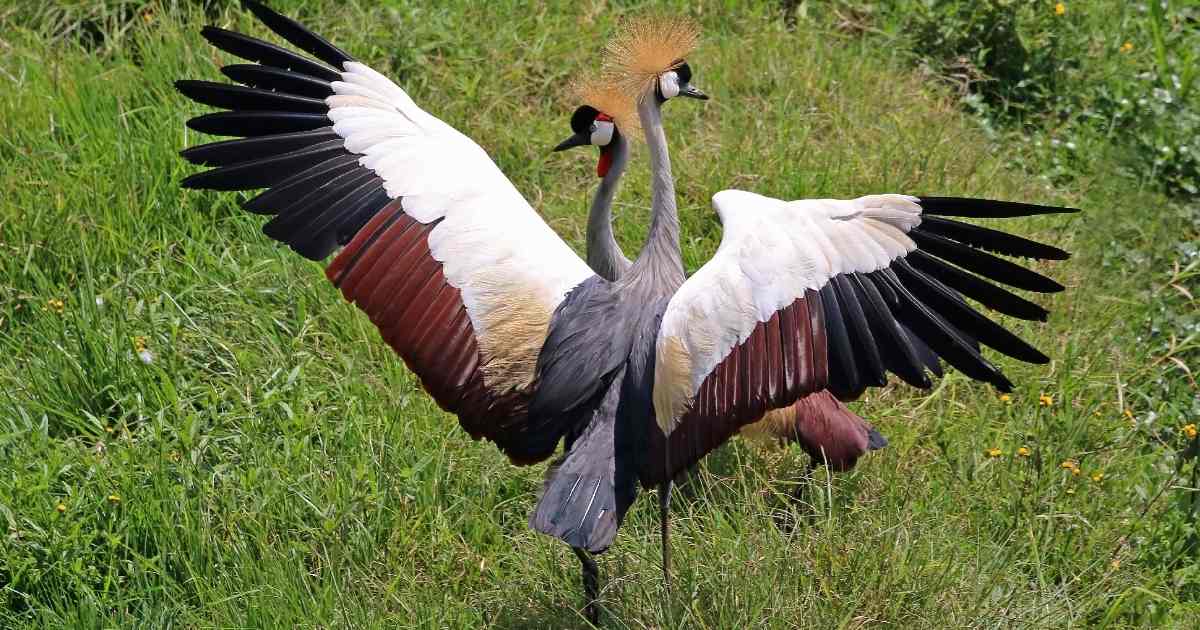
- Wingspan: 6.5 feet
- Weight: 7.7 to 8.8 pounds
- Scientific name: Balearica regulorum
- Key Features: Crown of golden feathers, Performs elaborate courtship dances
The Grey Crowned Crane, scientifically known as Balearica regulorum, is a striking bird with a wingspan of about 6.5 feet. Native to eastern and southern Africa, these cranes are easily recognizable by their crown of golden feathers, which gives them a regal appearance. They inhabit wetlands, grasslands, and savannas, where they feed on a variety of plants, insects, and small animals.
Grey Crowned Cranes are known for their elaborate courtship dances, which involve a series of bows, jumps, and wing flutters. These displays are not only beautiful but also play a crucial role in strengthening pair bonds. Despite their large size, these cranes are agile flyers, often seen soaring gracefully above their habitats. Conservation efforts are ongoing to protect these magnificent birds, as they face threats from habitat loss and hunting.
8. California Condor

- Wingspan: 9.5 feet
- Weight: 15 to 31 pounds
- Scientific name: Gymnogyps californianus
- Key Features: Bald head, Scavenger that feeds on carrion
The California Condor, or Gymnogyps californianus, is one of the largest flying birds in the world, with a wingspan of up to 9.5 feet. This impressive bird is native to western North America and is known for its bald head, which helps keep it clean while feeding on carrion. These scavengers play a vital role in their ecosystems by consuming dead animals and preventing the spread of disease.
California Condors inhabit rocky shrubland, coniferous forests, and oak savannas. They are highly social birds, often seen in small groups. Despite their large size, they are excellent fliers, capable of soaring for hours on thermal updrafts. Conservation efforts have been critical in preventing their extinction, as their populations were once critically low due to habitat loss, lead poisoning, and hunting. Today, they are a symbol of successful wildlife conservation.
7. Griffon Vulture
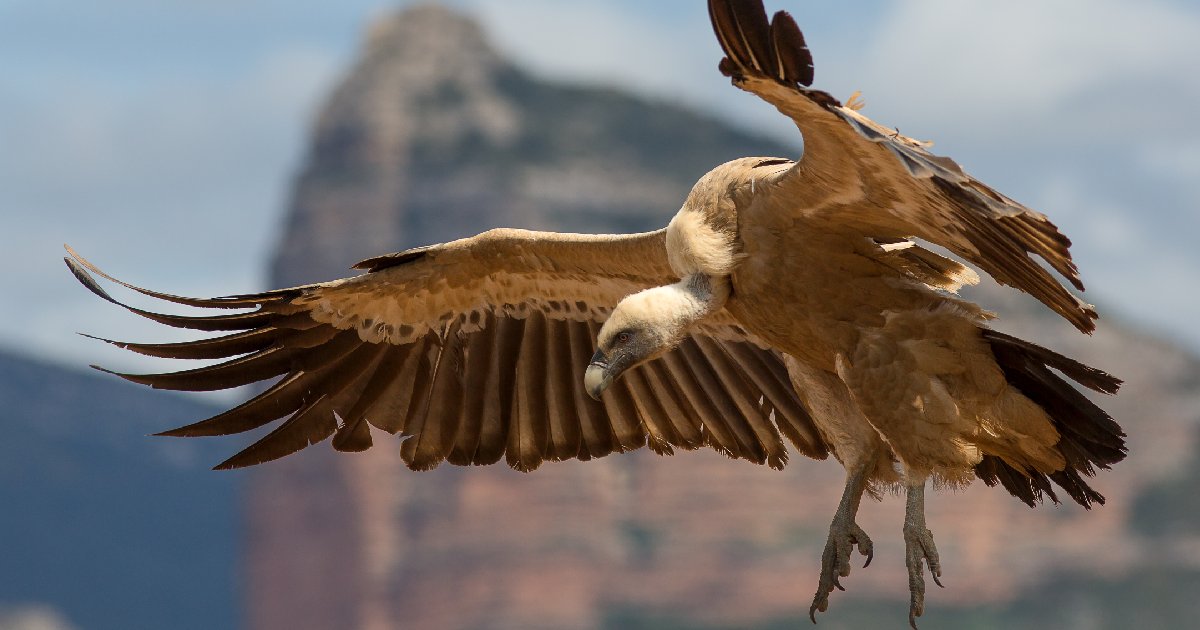
- Wingspan: 8.2 to 9.2 feet
- Weight: 15 to 25 pounds
- Scientific name: Gyps fulvus
- Key Features: Pale head and neck, Feeds primarily on carrion
The Griffon Vulture, known scientifically as Gyps fulvus, is a large bird of prey with a wingspan ranging from 8.2 to 9.2 feet. These vultures are found across Europe, Asia, and Africa, inhabiting mountainous regions, open plains, and cliffs. They are easily recognized by their pale head and neck, which contrast with their dark body feathers.
Griffon Vultures are scavengers, feeding primarily on the carcasses of dead animals. Their keen eyesight allows them to spot carrion from great distances while soaring high in the sky. These birds play an essential ecological role by cleaning up the environment and preventing the spread of disease. Despite their somewhat gruesome diet, they are crucial for maintaining healthy ecosystems. Conservation efforts are ongoing to protect their populations from threats such as habitat loss and poisoning.
6. Bearded Vulture
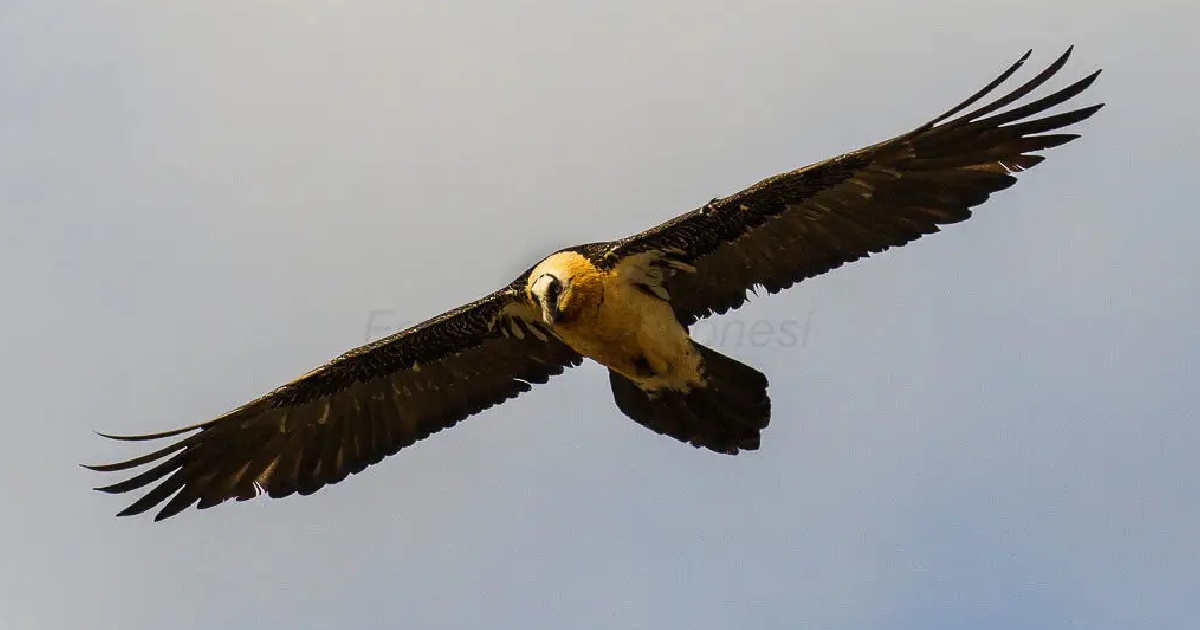
- Wingspan: 7.5 to 9.3 feet
- Weight: 11 to 15 pounds
- Scientific name: Gypaetus barbatus
- Key Features: Feathered facial “beard”, Unique diet primarily consisting of bones
The Bearded Vulture, or Gypaetus barbatus, is a distinctive bird of prey known for its feathered facial “beard.” With a wingspan of up to 9.3 feet, this vulture is found in the mountainous regions of Europe, Asia, and Africa. Unlike other vultures, the Bearded Vulture has a unique diet primarily consisting of bones, which it drops from great heights to crack open and consume the marrow inside.
These vultures inhabit high-altitude areas where they build their nests on cliffs and rocky outcrops. They are solitary birds, often seen gliding gracefully over rugged landscapes in search of bones. The Bearded Vulture’s striking appearance and unusual feeding habits make it one of the most fascinating birds in the world. Conservation efforts are focused on protecting their habitats and ensuring the survival of this unique species.
5. Whooper Swan
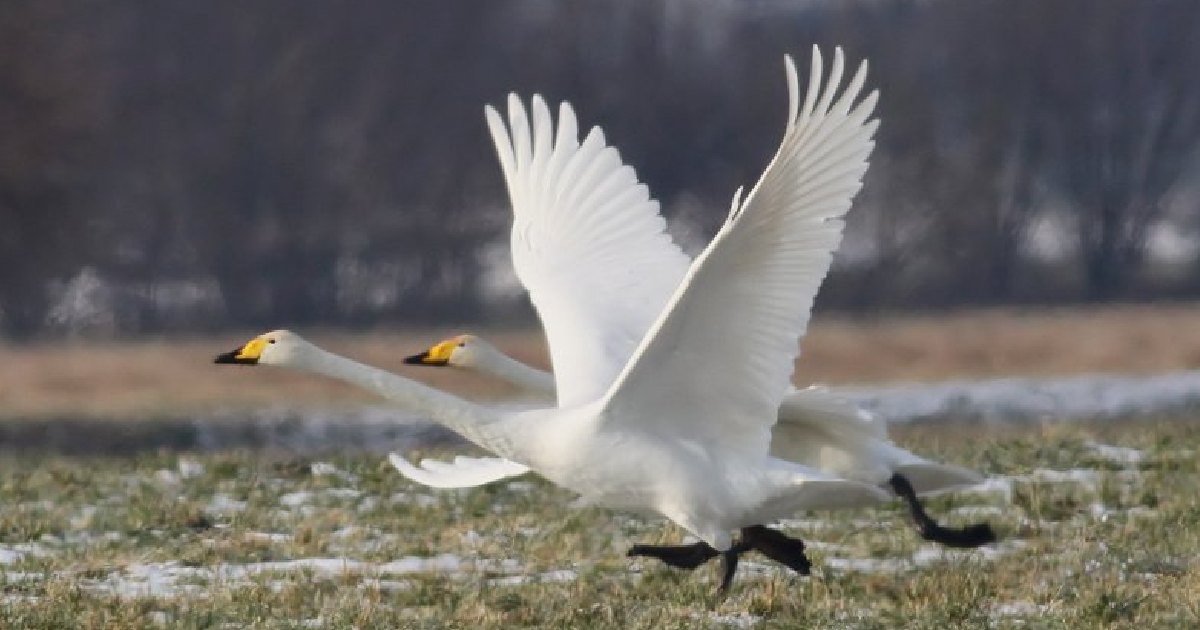
- Wingspan: 7.4 to 9 feet
- Weight: 15 to 33 pounds
- Scientific name: Cygnus cygnus
- Key Features: Bright yellow and black bill, Known for its loud, trumpeting call
The Whooper Swan, scientifically known as Cygnus cygnus, is a large and elegant bird with a wingspan of up to 9 feet. Native to northern Europe and Asia, these swans are easily recognized by their bright yellow and black bill. They inhabit wetlands, lakes, and rivers, where they feed on aquatic plants, small fish, and invertebrates.
Whooper Swans are known for their loud, trumpeting call, which can be heard over long distances. These swans are strong fliers, capable of migrating thousands of miles between their breeding and wintering grounds. They often travel in family groups, with parents leading their cygnets on the long journey. Conservation efforts are focused on protecting their habitats and ensuring the survival of this majestic species.
4. Andean Condor
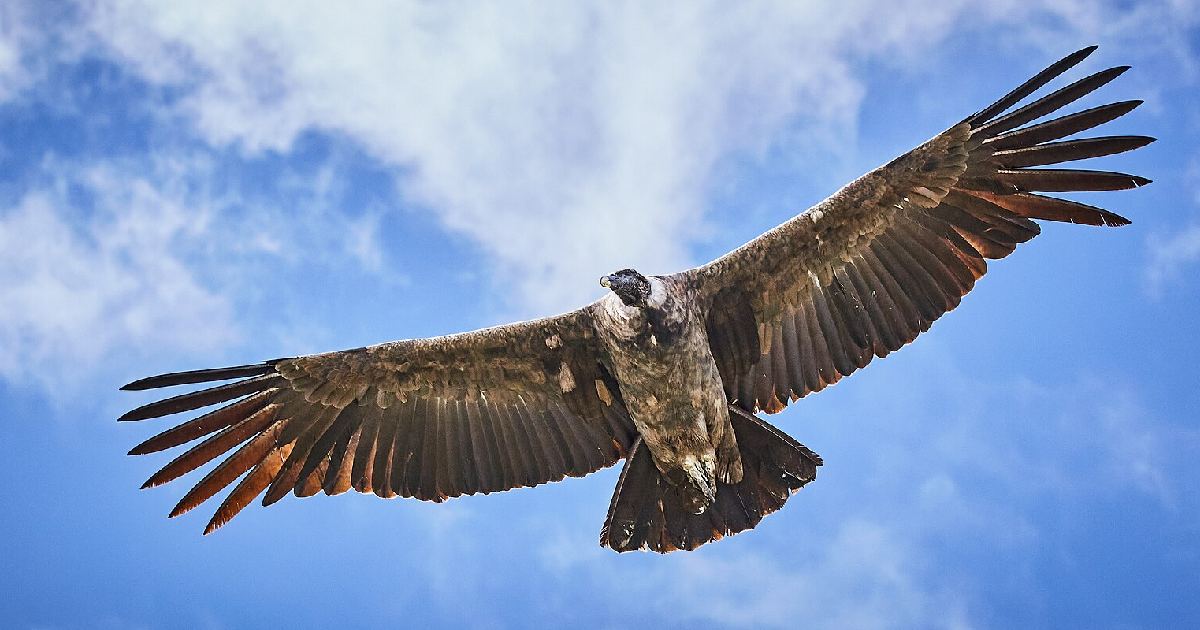
- Wingspan: 10 to 10.5 feet
- Weight: 24 to 33 pounds
- Scientific name: Vultur gryphus
- Key Features: Largest wingspan of any land bird, Scavenger that feeds on carrion
The Andean Condor, or Vultur gryphus, boasts the largest wingspan of any land bird, reaching up to 10.5 feet. This impressive bird is native to the Andes Mountains and adjacent Pacific coasts of South America. Andean Condors are scavengers, feeding primarily on carrion. Their bald heads, which help keep them clean while feeding, are a distinguishing feature.
These birds inhabit high-altitude regions, often seen soaring effortlessly over the rugged terrain. Andean Condors play a vital role in their ecosystems by consuming dead animals and preventing the spread of disease. Despite their size, they are skilled fliers, using thermal currents to stay aloft for hours. Conservation efforts are crucial for their survival, as they face threats from habitat loss and poisoning.
3. Marabou Stork
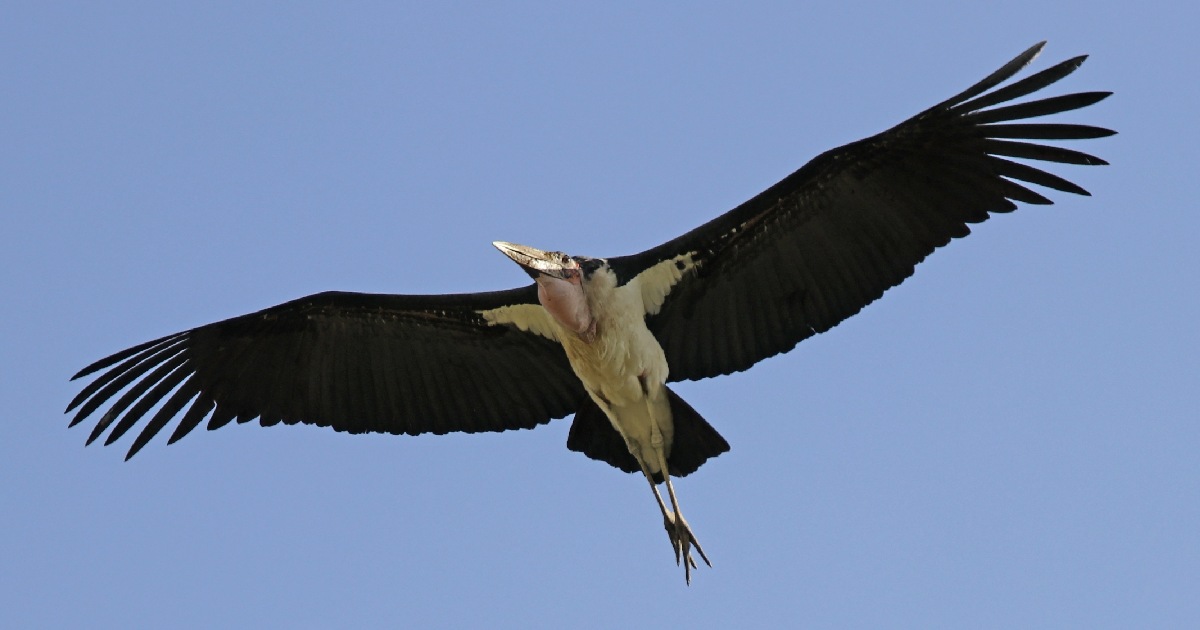
- Wingspan: 7.4 to 9.5 feet
- Weight: 11 to 20 pounds
- Scientific name: Leptoptilos crumenifer
- Key Features: Bald head and neck, Known for its scavenging habits
The Marabou Stork, scientifically known as Leptoptilos crumeniferus, is a large bird with a wingspan of up to 9.5 feet. These storks are native to sub-Saharan Africa and are known for their bald head and neck, which help them stay clean while feeding on carrion. They inhabit wetlands, savannas, and garbage dumps, where they find ample food.
Marabou Storks are scavengers, feeding on dead animals and garbage. They play a crucial role in cleaning up the environment and preventing the spread of disease. Despite their somewhat unattractive appearance, they are important members of their ecosystems. Conservation efforts focus on protecting their habitats and ensuring their survival in the wild.
2. Great White Pelican

- Wingspan: 9 to 11.8 feet
- Weight: 20 to 33 pounds
- Scientific name: Pelecanus onocrotalus
- Key Features: Large, expandable throat pouch, Known for cooperative fishing
The Great White Pelican, or Pelecanus onocrotalus, is a massive bird with a wingspan of up to 11.8 feet. These pelicans are found in parts of Europe, Asia, and Africa, inhabiting lakes, rivers, and coastal regions. They are known for their large, expandable throat pouch, which they use to catch and store fish.
Great White Pelicans often engage in cooperative fishing, working together to herd fish into shallow waters where they can easily scoop them up. These birds are strong fliers, often seen soaring in large flocks. Their impressive wingspan and cooperative behavior make them one of the most fascinating bird species. Conservation efforts are focused on protecting their habitats and ensuring the survival of this majestic species.
1. Wandering Albatross
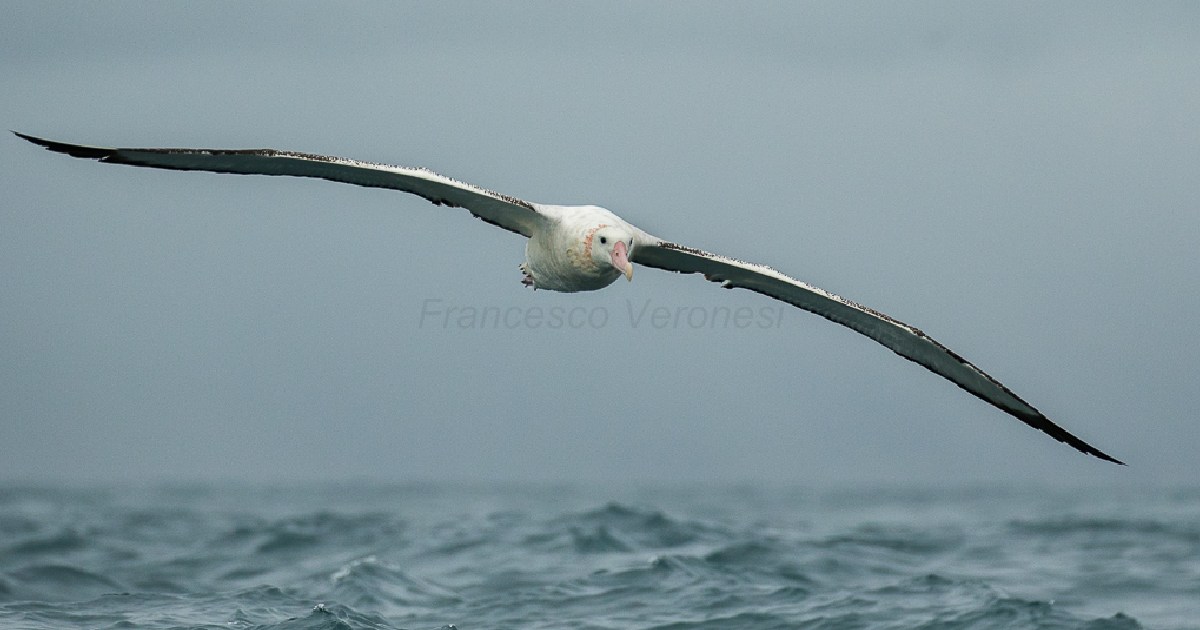
- Wingspan: 11 to 12 feet
- Weight: 13 to 26 pounds
- Scientific name: Diomedea exulans
- Key Features: Largest wingspan of any living bird, Known for long-distance flights
The Wandering Albatross, scientifically known as Diomedea exulans, holds the record for the largest wingspan of any living bird, reaching up to 12 feet. These heaviest bird species are found in the Southern Ocean, where they spend most of their lives gliding over the open sea. They are known for their long-distance flights, often traveling thousands of miles in search of food.
Wandering Albatrosses feed primarily on squid and fish, which they catch by skimming the ocean surface. Their long, narrow wings allow them to soar effortlessly on ocean winds, conserving energy during their long journeys. This type of largest flying bird is monogamous, forming lifelong pairs and returning to the same nesting sites year after year. Conservation efforts are critical for their survival, as they face threats from fishing practices and habitat degradation.
Conclusion
Birds with the largest wingspans are truly awe-inspiring creatures, each with unique adaptations that allow them to thrive in their respective environments. From the Southern Ocean to Central and South America, these living bird species showcase the incredible diversity and capabilities of avian life. Their impressive wingspans, hunting skills, and migratory behaviors highlight the wonder of the natural world. As we continue to study and protect these remarkable extant bird species, we can gain a deeper appreciation for the beauty and complexity of our feathered friends.
Frequently Asked Questions (FAQs)
What is the biggest bird’s wingspan?
The Wandering Albatross, scientifically known as Diomedea exulans, holds the record for the largest wingspan of any living bird. Its wingspan can reach up to 12 feet, allowing it to soar effortlessly over the Southern Ocean. This impressive wingspan helps the Wandering Albatross cover vast distances while searching for food, making it a remarkable example of avian adaptation.
What bird has a 21-foot wingspan?
There is no known living bird with a wingspan of 21 feet. The Wandering Albatross has the largest wingspan of any living bird, reaching up to 12 feet. Historical records and myths occasionally mention birds with extremely large wingspans, but such claims are not supported by scientific evidence. The Wandering Albatross remains the bird with the largest verified wingspan.
Can a bird fly 2,000 feet?
Yes, many birds can fly at altitudes of 2,000 feet and higher. Birds such as the Andean Condor and the Golden Eagle are known for their high-altitude flights. These birds use thermal currents to soar to great heights, conserving energy while covering large distances. High-altitude flight allows birds to spot prey and navigate over challenging terrain effectively.
Who has the longest wingspan in the world?
The Wandering Albatross holds the title for the longest wingspan in the world. With a wingspan reaching up to 12 feet, this magnificent bird can glide over the ocean for long distances with minimal effort. Its long, narrow wings are perfectly adapted for dynamic soaring, making the Wandering Albatross one of the most efficient long-distance fliers and tallest flying birds in the world.
What is the 12-foot tall bird?
There are no known living biggest birds with a height of 12 feet. However, extinct birds like the Elephant Birds of Madagascar, which were flightless birds, could reach heights of around 10 feet and were among the tallest birds to have ever lived. These birds were known for their massive size and laid the largest bird eggs. Currently, the tallest bird is the Ostrich, standing up to 9 feet tall.

